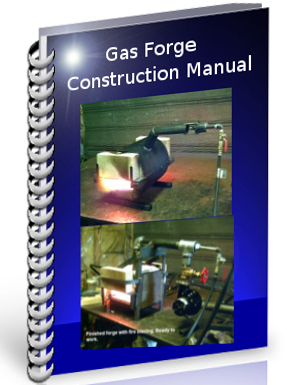What is Wrought Iron?Common useage of the term wrought iron is to mean any decorative thing made out steel and usually painted black. This could be applied to wrought iron furniture, chandeliers, gates etc.Strictly speaking in blacksmith terms wrought iron is actually a type of metal. Much the same as talking about sand and clay being different types of earth. The definition of wrought is to shape by hammering. So technically to be wrought iron it has to be hammered to shape. 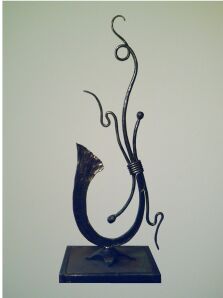 Today instead of using just iron we use steel (a mix of iron and carbon). So to make my sculptures I use hand wrought steel, or forged steel to create the forms. Wrought iron as material has not been commercially produced on a large scale since the early 1900's, so we are forced to use steel. Lets not confuse things too much, I will use the term wrought iron sculpture. If you are a blacksmith then know I mean forged steel. The joy of working the steel hot is that it becomes very flexible and can create long self supporting shapes when it cools. Most of my sculptural work has these free flowing organic lines in it. The sculpture at the above left stands about 30 inches high and is completely forged and textured. 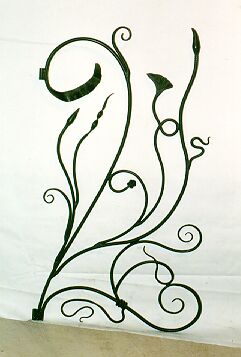 It can be argued that wrought iron sculpture is not limited to non functional pieces of work. This garden gate shows variations on how the metal can be wrought to shape. The garden gate has a sculptural form all its own but is a very functional decorative piece of work.  Genesis Wall Sculpture Genesis Wall SculptureThis wrought iron wall sculpture is 70 inches high and 20 inches wide. This piece is heavily textured and contrasts textural components. By using heat and hammer I can create a whole series of different textures on the indvidual pieces. 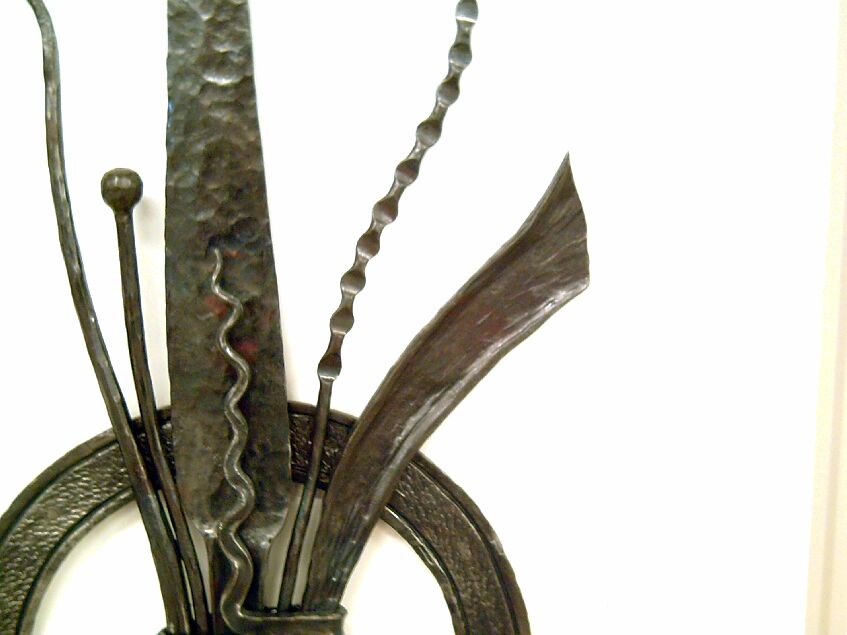 In this photo you can see the detail in the texture. This in part is what sets forged wrought iron apart from cold worked fabricated steel. There is much more interest and life to something that is worked all over its surfaces. Instead of working just with line I tend to use form a lot more. This is part of my individual style of working with the steel. 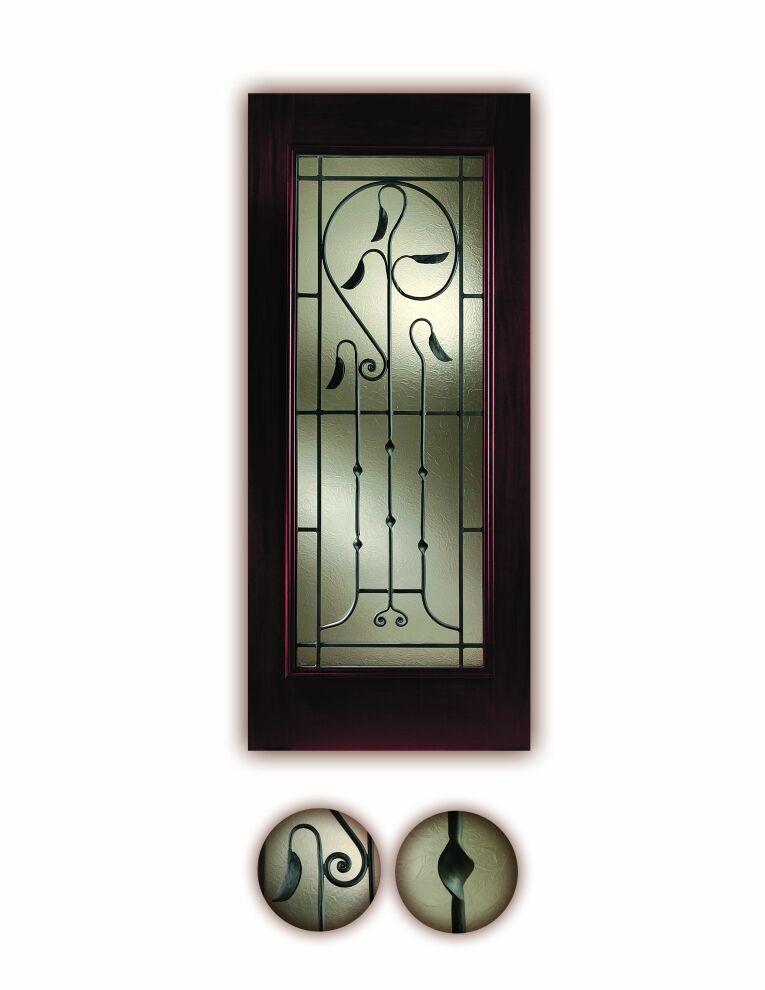 This is a wrought iron door grill that I made for one of my Ontario customers. Click on the picture to see better detail of how I created the window grill. Creating pleasing and sculptural door and window grills is a specialty of mine. This is a sculptural funeral urn made for The Grave Goods exhibit in Woodstock Ontario 2008. The disk portion holds the ashes. It is constructed with forged or wrought steel. I mostly used 1/2 thick plate with heavily textured forging. The overall height is about 24 inches high by approximately 20 inches wide.  This wrought iron
Sculptural Cross is 60 inches high by 40
inches wide. It is currently on display
at the Woodstock, Ontario, Grave Goods
2008 exhibit. This wrought iron
Sculptural Cross is 60 inches high by 40
inches wide. It is currently on display
at the Woodstock, Ontario, Grave Goods
2008 exhibit.All components are forged to shape. 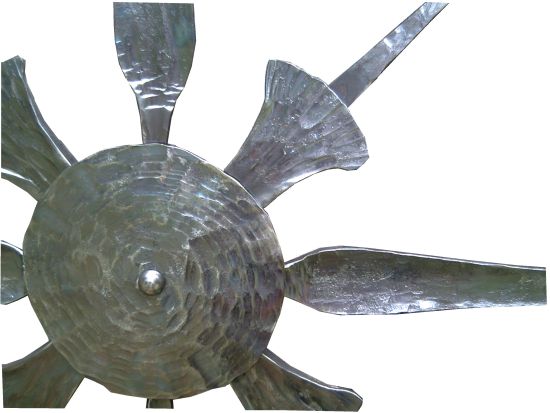 The detail image shows
the rich textures and the contrast
achieved with the hammer and the
heat in the forging process. The detail image shows
the rich textures and the contrast
achieved with the hammer and the
heat in the forging process.
How Wrought Iron Was originally MadeThe original
process of making "steel" was to smelt
iron ore. The smelting process heats
the ore and drives off impurities and
then creates a chemical reaction in
the smelter that adds carbon to the
iron granules. These blooms
range in size depending on the size of
smelter, ore used, etc. The wrought
process in wrought iron is the
hammering. This bloom is not yet
useful, as it has not been
consolidated and has very little
structural strength. With the invention of different types of smelters in the early 20th century a more uniform mass of steel could be created. This negated the need for the wrought portion in the refining process of the iron and it could be rolled into bars and sheet that we use today. The new types of smelters allowed a much greater control of the process. This is a very
brief introduction into wrought iron.
The main thing to remember is that
what we call wrought iron today is
usually cold bent steel welded
together. It needs to be hammered to
shape be wrought and typically only
blacksmiths will make true "wrought
iron" artwork today.
|
Members
Log
In Here!
R.R. #2 Cargill,
Ontario,
|
| Henkel
Knives and
Cutlery Click Here
|
Home Gallery Classes Air Hammer for Sale Custom Work Educational Videos Articles Items for Sale Links Contact
copyright
www.artistblacksmith.com
wrought iron

